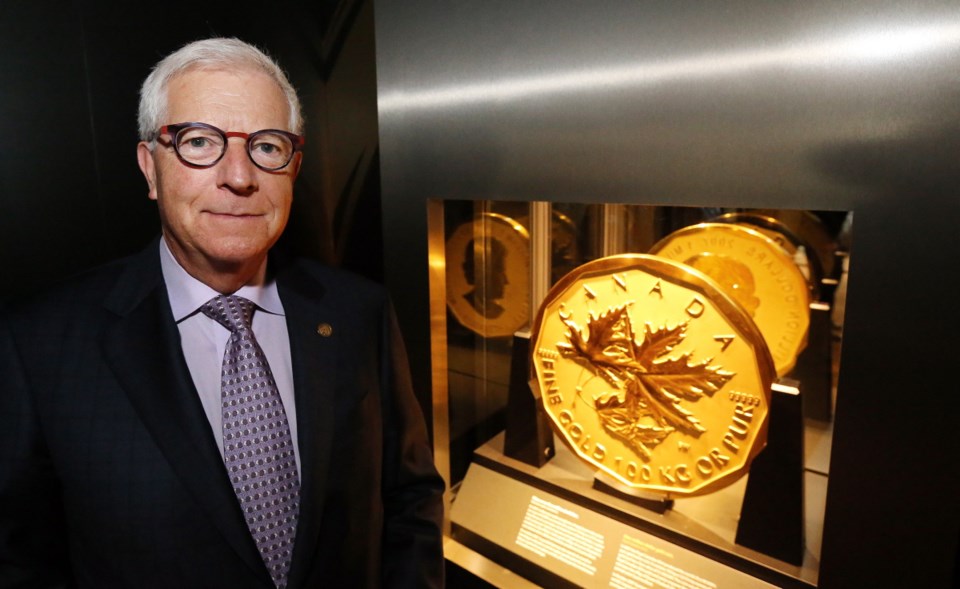One hundred kilograms of the purest gold ever minted into one coin greets visitors to the latest exhibit at the Royal B.C. Museum.
The giant Canadian Maple Leaf coin, on display at Gold Rush! El Dorado in B.C., is certified to 99.999 per cent pure gold, the highest assay level ever achieved. In today’s prices, it’s worth about $4.6 million.
The property of the Royal Canadian Mint, the coin — the largest gold coin ever made — was first minted in 2007 as a demonstration of Canada’s abilities as a producer of quality gold, said Carman Joynt, chairman of the mint’s board.
Since then, investors have approached the mint and four more have been made and sold.
Joynt said Canada now leads the world in the production of investment-grade gold coins, surpassing even the Rand of South Africa and American Gold Eagle.
As a demonstration of gold’s enormous value, it’s a fitting opening for Gold Rush! El Dorado in B.C., which seeks to illustrate the impact gold has had on human affairs and its enduring ability to fascinate. “We’ve got hundreds of pieces of gold here,” said Kathryn Bridge, a deputy director at the museum. “We’ve got gold nuggets, gold bars, gold bullion, gold dust and objects made of gold.
“But we’ve also got Emmys, Grammys, gold records and Oscars. All of these objects today speak of excellence and the value we think gold has.”
That enormous value, however, has meant the discovery of gold has always had explosive, near volcanic, effects.
During the Fraser River Gold Rush, from 1857 to 1860, Victoria — then a little Hudson’s Bay trading post — became a staging point for tens of thousand of miners, 30,000 in a few weeks.
Where they worked, those miners had no small impact: They cut down trees to make sluice boxes, which they fed with gravel dug up from river bottoms. And the best time for the miners to operate was during low-water season, when salmon spawn.
“If you do all this work at the same time the salmon are spawning, you’ve got a recipe for environmental disaster,” said Bridge.
First Nations people arrived at the river at the same time to harvest and smoke salmon as they had always done. But they found their way blocked by miners. “There was violence, bloodshed and huge, huge tensions,” said Bridge.
Gold seekers swarmed into California with the discovery of gold in 1848 in a rush that continued until 1855. During that time, the population of San Francisco grew from a few hundred to nearly 40,000.
Gold was also discovered in Australia in 1851, causing the sudden in-migration of tens of thousands from all over the world. By 1871, the population had exploded to 1.7 million from 470,000 prior to the discovery of gold. “It’s a transnational story and it’s a story over time,” said Bridge.
Gold Rush! El Dorado in B.C. runs until Oct. 31, then moves to the Canadian Museum of History in Gatineau, Que.



